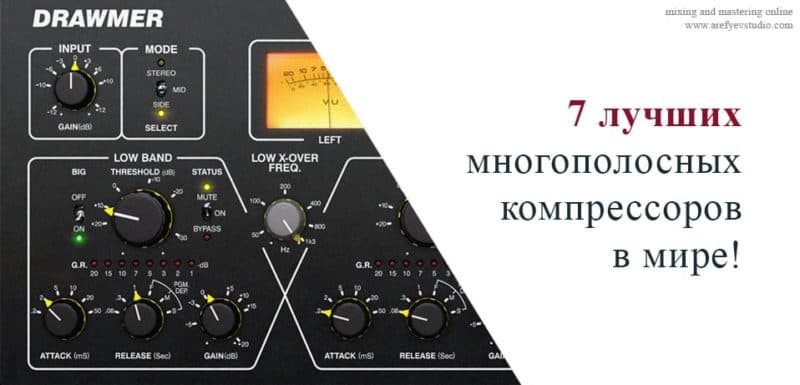The studio is full of equipment, which is scary to ask, but … what is a DI Box?
DI – means direct entry. Box is just a box for connecting instruments to a console or multi-track recorder. The main function is to convert impedance, but in reality, dibox is also used for the following reasons:
- To isolate the device and remove noise
- For recording a direct guitar signal and then mixing it
- To reinforce the guitar signal
DI Box is a great way to give the atmosphere of a live performance without any noise. Bassists and guitarists can use it to capture sound while sending a double track to the amplifier. This works especially well when recording live instruments. Many modern engineers prefer to record a direct signal. Some use it during mixing, in case the mic preamps fail (although this use raises a lot of questions).
Most boxes are built according to the standard principle: one side has an unbalanced 1/4 input, and the other has a balanced XLR output. Transformers are placed inside, the task of which is to convert high impedance signals (“HI-Z”) to signals with low impedance (“low-Z”), which can be amplified using a preamplifier.
Impedance is a specialized form of resistance found in analog circuits.
Passive or active?
Di-boxes have two forms: passive or active. Passive ones do not require a power source. No batteries, no phantom power from the console. Just plug in the instrument to start transmitting the signal. Usually they have very simple functions:
- input panel, usually reduces the input signal of the device by -15db to avoid cutting off peak areas
- a polar switch reverses polarity and flips pins 2 and 3 to XLR. Most often used to interact with old audio equipment.
- Ground / Lift switch – removes noise below 60 Hz caused by AC power, raising pin 1 (ground) to XLR.
Active DI Boxs, on the other hand, require a power source, such as a phantom, from the console or internal batteries.
- Gain Control – active diboxes are literally preamps, and some even offer knobs for gain control.
- Low Cut Filter – use of additional power, allows you to control the signal
Finding the right equipment can take time, and there are many options with different price ranges. Some engineers prefer to buy the least expensive DIs, as they technically “do nothing” for the signal. But as everyone who has a trendy microphone will tell you, transformers can greatly affect the sound.
Radial Engineering has called itself the “best direct box in the world”, creating durable high-quality diboxes for decades. Their J-series is equipped with large Jensen transformers, known for their advanced low-frequency characteristics. The ProD series has a proprietary transformer with a radial design and slightly more compact shapes.
CountrymanDIs are also major in professional recording studios, known for their clear, warm, and natural sound. Telefunken has also recently made its way to the DI market with active and passive units that come in mono and stereo configurations. And there are many such devices with rather colorful characteristics. There are many choices.
— See also: Free Auto-tune VST Plugins —
How to use DI
To convert an unbalanced HI-Z instrument to a balanced low level signal, simply connect the instrument to the unbalanced input using a 1/4 TS cable and connect the balanced XLR output to the preamplifier.
Guitar> Unbalanced 1/4 “HI-Z Input
Balanced XLR DI Output> Input for Recording Interface
In addition, you can record the sound of a guitar cabinet, not just a guitar. Most devices have a Thru jack that can be connected to the box. Remember to set the DI to “speaker / amp” instead of “instrument”.
Loudspeaker for speaker outputs> Unbalanced 1/4 “DI input (in speaker mode)
Balanced XLR Output> Input for Recording Interface
If you want to split the signal to record the direct stream of the guitar while using the sound through the amplifier, use Thru Output to send a duplicate signal.
Guitar> Unbalanced 1/4 “HI-Z DI Input
ThruDI Output> Unbalanced 1/4 “HI-Z Guitar Amp Input
Balanced XLR output> Input for recording interface
Author’s Note: When tracking direct and amp guitar signals, you may need to change the polarity of the DI field to keep the signals in phase. Some boxes, such as the Radial J-Series, allow you to use both input and output 1/4 “as stereo inputs. This allows you to convert stereo 1/4 output to mono XLR output.
Keyboard Out Left> Unbalanced DI Input
Keyboard Out Right> Enter “Thru” (in Thru mode)
Balanced XLR output> Input for recording interface
After setting up the signal chain, it is important to check the grounding problems. Isolate the DIBox track and listen carefully for a buzz or noise at 60 Hz caused by the ground loop. We hope you don’t hear anything. But if there is noise, try switching ground / lift to remove it.
— See also: 10 best cheap MIDI keyboards of 2019 —
Guitar reamping may seem confusing because the signal continues to shift from unbalanced to balanced or HI-Z to a linear level. Record guitars in your DAW program as usual:
Guitar> Unbalanced 1/4 “HI-Z DI Input> Balanced XLR DI Output> Input to Recording Interface
Then use a dibox equipped to convert the line level signal from the DAW back to an unbalanced HI-Z signal for processing by the amplifier. After that, connect the box using the unbalanced 1 / 4TS cable and press play in DAW and record the sound using microphones, as if the guitarist were playing live.
DAW Output> Re-Amp Box Line Level Input
Re-Amp Box> Unbalanced HI-Z Output> Guitar Amp Input




